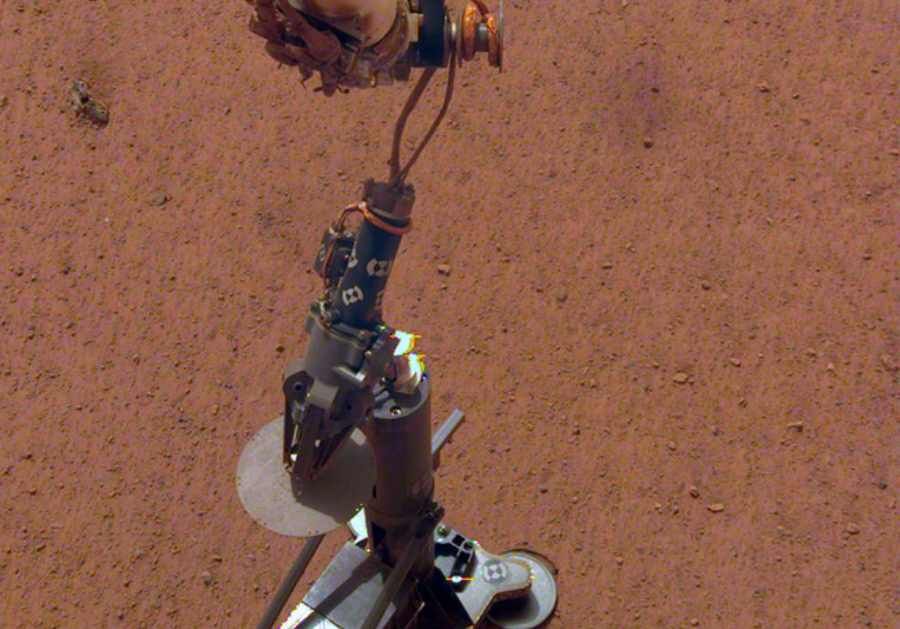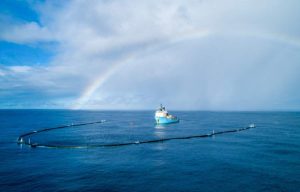Polish Mole placed on the surface of Mars

Polish Mole placed on the surface of Mars
The robotic arm of the InSight lander has placed the Crete on the surface of Mars. The device was designed and manufactured in Poland by engineers from Astronika and will begin penetrating the Martian soil in a few days.
The latest images from the InSight lander released by NASA show the thermal probe standing on the surface of the Red Planet along with the Mole. HP3 (Heat Flow and Physical Properties Package) stands about a meter away from the SEIS (Seismic Experiment for Interior Structure) seismometer, whichory was placed on Martian soil in December. According to the planow Mole will begin exploring the interior of the Red Planet on February 22.
The mission aims to study the seismic activity of Mars. Scientists will want to get an indicationowks on the planet’s internal structure by detecting vibrations caused by surface quakes, meteorite impactsoin and other such events. The research will be carried out using the ultra-precise SEIS seismometer.
The second mainoThe main scientific instrument is the HP3 – probnik to measure the heat flux from the planet‘s interior, whichory will be launched to a depth of 5 metersointo the Martian soil. The contractor for the insertion mechanism, the Crete, is the Polish company Astronika, whoseowhose engineers have made the Polish space industry known at NASA.
– We look forward to breaking several recordsow on Mars – said Tilman Spoin of the German Space Agency (DLR – Deutsches Zentrum für Luft- und Raumfahrt), a ktora provided proThe heat sensor for the InSight mission. The mole is to bring the probe to a depth of 5 metersow. That’s deeper than the performance of any previous mission to the Red Planet. For porownania, the Viking 1 lander caved in at 22 centimeters. The Phoenix lander has reached a depth of 18 centimetersow.
The HP3 instrument looks a bit like a car jack, but with a vertical metal tube at the front to house the 40-centimeter Mole. The HP3 instrument is connected by wires to the lander, and the Mole with the HP3 instrument. The tape connecting the penetrator to the HP3 is imbued with sensors, whichore going to measure in real timeow. Mole has mounted an array of sensorsow to measure the temperature, whichore will measure how heat moves through the Martian soil.
The mole will stop every 50 centimetersoIn order to make the measurementow. Pitting itself will create friction, which theore will release heat, so before it takes measurementsow, will have to cool down. It is expected to take two days. After that, the Mole will be heated to a temperature of about 10 degrees Celsius, and sensors will measure how quickly the ground heats up, which will give information about the conductivity of the soil. All this makes achieving the intended depth of 5 metersow took some time.
NASA experts have carefully selected the landing site. The idea was that the Mole would not encounter some hard rock below the surface. This rownina Elysium Planitia. As luck would have it, the landing site turned out to be a small crater filled with sand and dust named by an engineerow from the Jet Propulsion Laboratory (JPL) „big sandbox”. Specialists say they couldn’t think of a better spot.

– We chose the perfect landing site, with almost no rocks on the surface, said Troy Hudson of JPL. – This gives us a powod to think that there are not many large rocks below the surface, but we have to wait and see what we encounter underground. A mole weighs less than a pair of shoesow, uses less power than a Wi-Fi router and is expected to dig at least 3 meters deepoin another planet – added.
Scientists obviously want to reach a depth of 5 metersow, but the primary goals of the mission are likely to be achieved at depths of less than 3 metersow. Researchers believe that at this depth the ground temperature should not depend on the surface temperature and por of the year.
Measurements from both instruments should give scientists an indication of theowks on the history of the formation of Mars. Scientists will find out what changes are taking place in the planet’s structure, what the temperature distribution is like below its surface, and get some information about the planet’s core.
The third mainoAnother scientific instrument of the InSight mission is RISE (Rotation and Interior Structure Experiment) – instrument to measure the Doppler shift of the signaloin between InSight and Earth. It will allow the detection of minute variations in the axis of rotation of Mars, which should give additional information about the planet’s nucleus, including its size.




